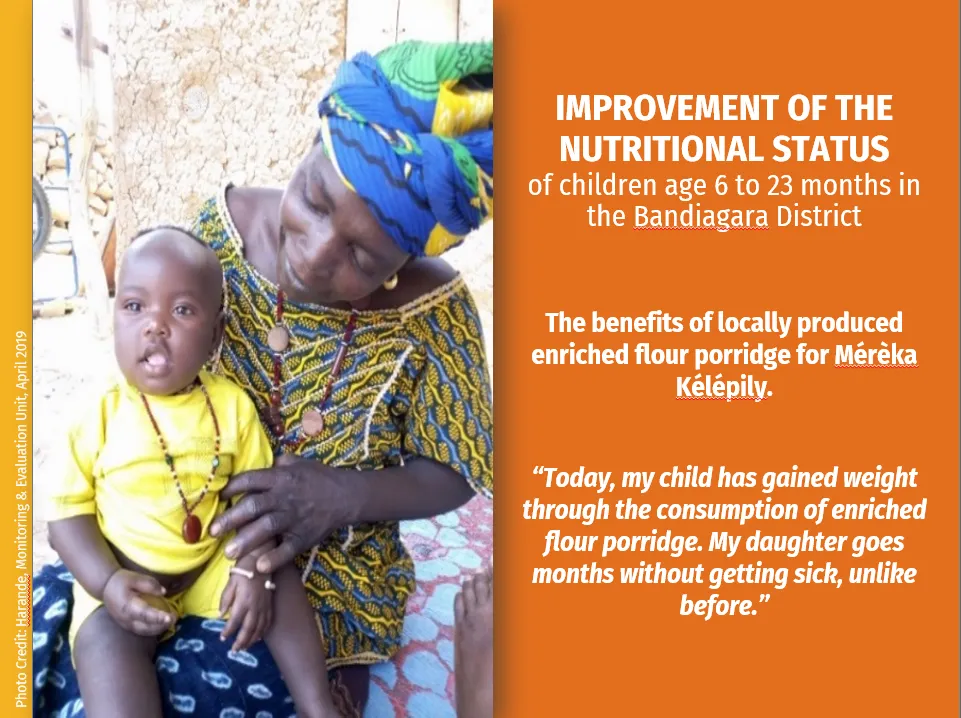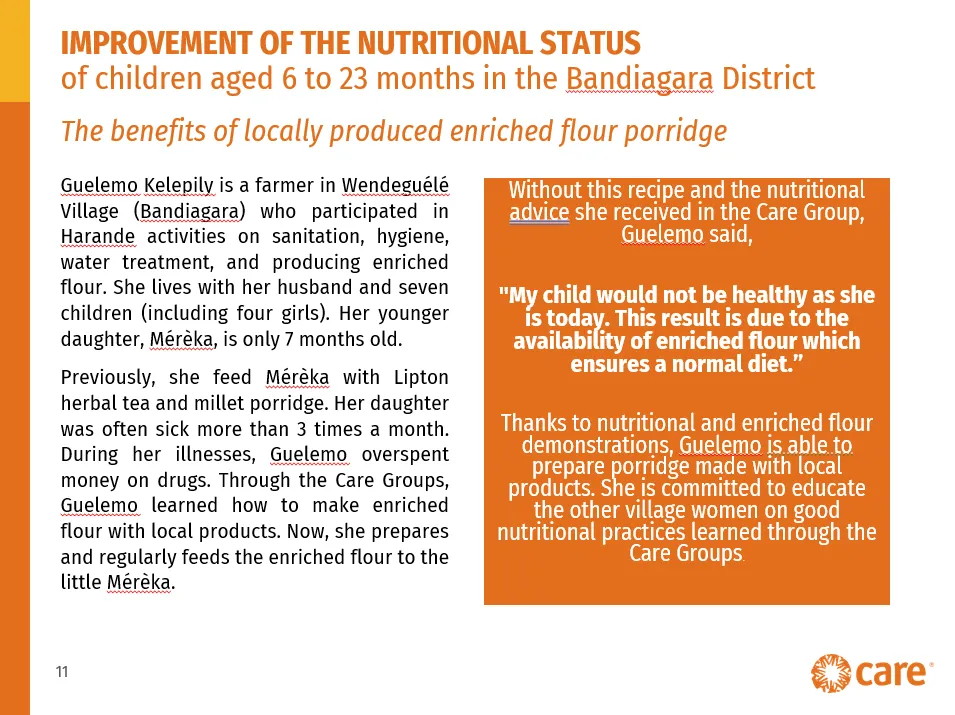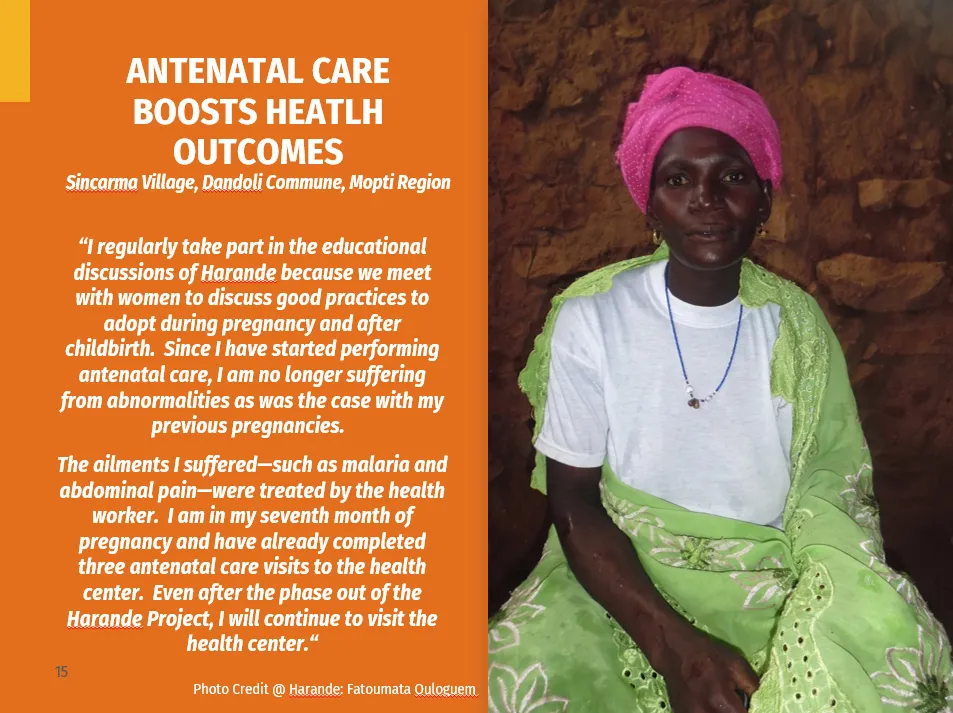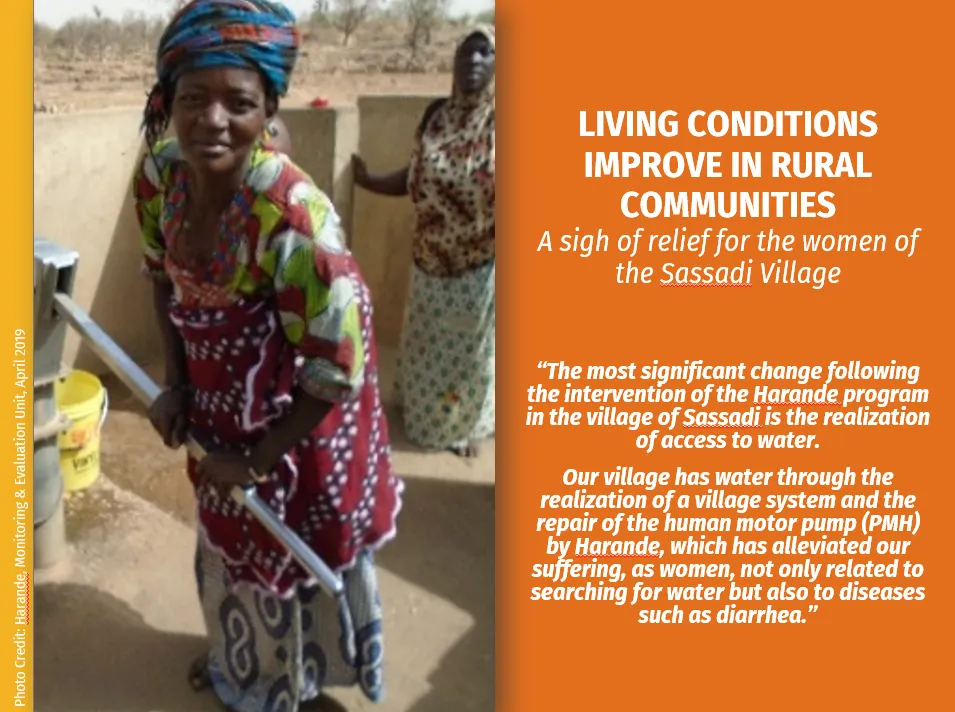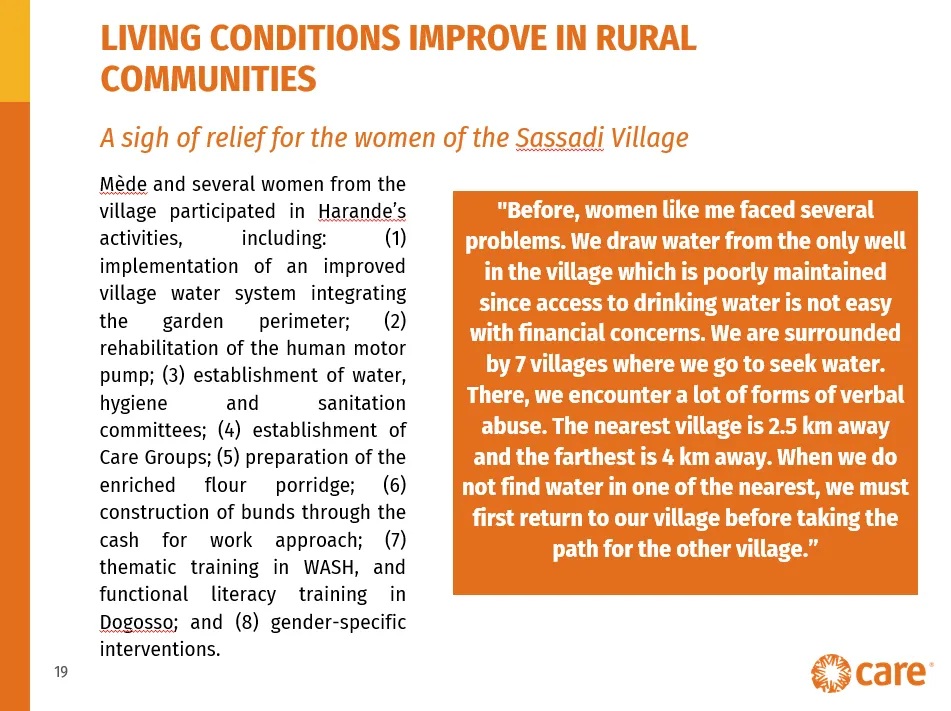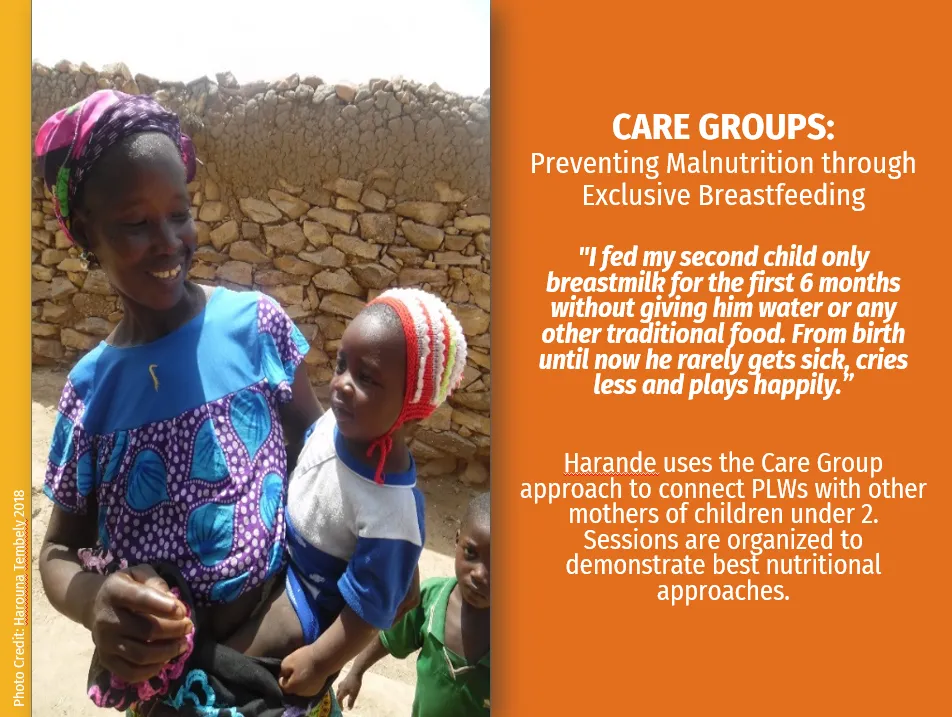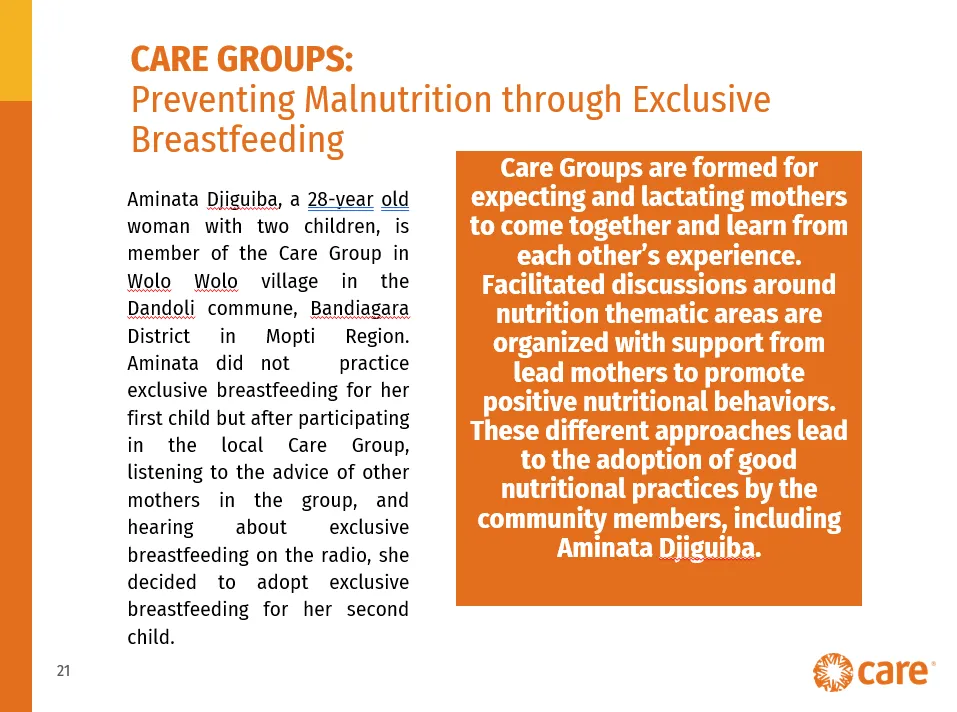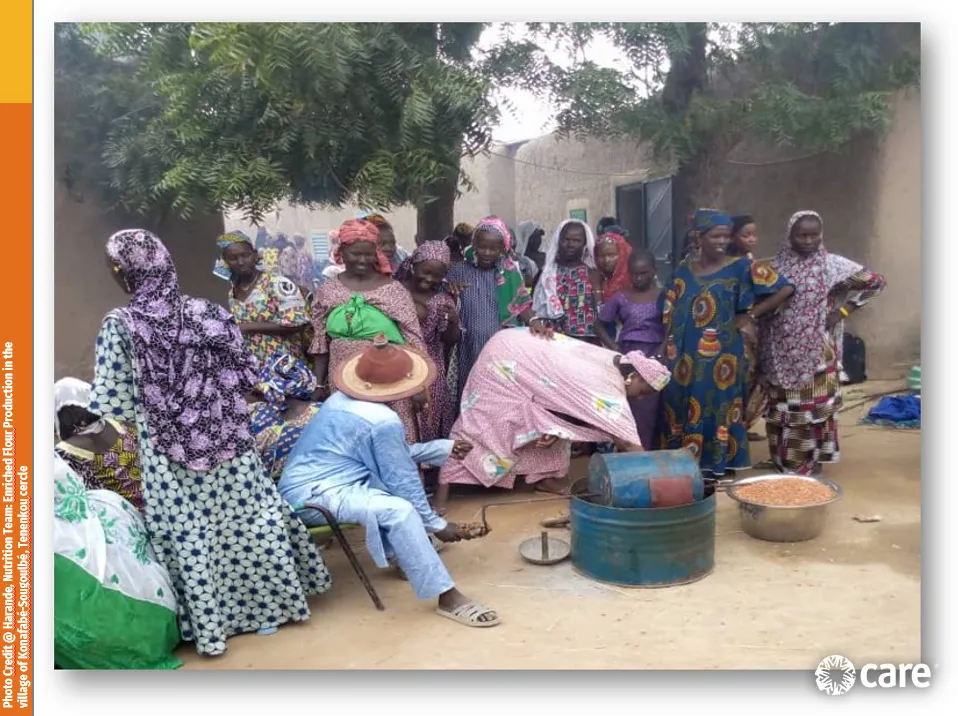Background
Harande means “food security” in Peulh, a local language in Mali. The project’s goal is food security, but it goes beyond that. Harande helps communities build resilience and the skills they need to withstand the frequent shocks in their lives. Funded by USAID’s Office of Food for Peace, the project focuses on the Mopti region – an area in northern Mali that suffers from frequent drought and current conflict and instability.
To overcome these obstacles and the underlying causes of poverty and hunger, vulnerable families must be able to prepare for and adapt to climate change. They need to be able to respond effectively to natural, economic, and social shocks such as conflict. Finally, they need access to critical resources such as health care, education, financial services, and agricultural services.
Intervention
The Harande project addresses these issues through an integrated project design that has five key components:
- Improving the nutritional status of women of childbearing age and children under 2. Harande has reached over 8,000 pregnant and lactating women with activities focusing on social and behavior change that will help families improve their nutrition, especially for children and pregnant women. It has trained mother leaders who will share what they have learned about health and nutrition with other women in their communities. The project is also using Community-Led Total Sanitation to help communities improve the safety of their drinking water.
- Diversifying and improving livelihoods for targeted participants (especially women and youth). Harande established 35 Farmers’ Field and Business Schools to promote climate-change-adapted agriculture. In addition, Harande distributes inputs like drought-resistant seeds and stronger animals so participants can improve their production. Harande also promotes non-agricultural livelihoods to increase incomes for youth and women. This has included placing 282 young people in apprenticeships with master craftsmen and supporting local savings groups so families can have resources to start businesses and cope with shocks.
- Increasing resilience to climate change among participants in targeted communities. Harande works with communities to access the weather information they need in order to plan for and respond to climate issues. The project built meteorological information systems in 119 villages, ensuring participants better information on upcoming weather events. Nearly 2,000 people in 40 villages participated in efforts to reclaim desert to plant gardens, grow animal feed, and improve water systems for livestock.
- Reducing conflicts that restrict food and nutrition security outcomes in targeted communities. Harande is reviving and establishing new land commissions to manage conflicts over resources. Currently 11 commune-based and 83 village-based commissions have been started.
- Improving governance related to food, nutrition, and income security. Two hundred fifty village-based Community Development Committees (CDC) are currently training 2,888 community members (33% women) on the roles and responsibilities of CDC and on participatory planning. Studies in the region indicate that every $1 spent on participatory planning will reduce the cost of disasters by $4. These local groups are also consulting with district and local governments to improve services.



